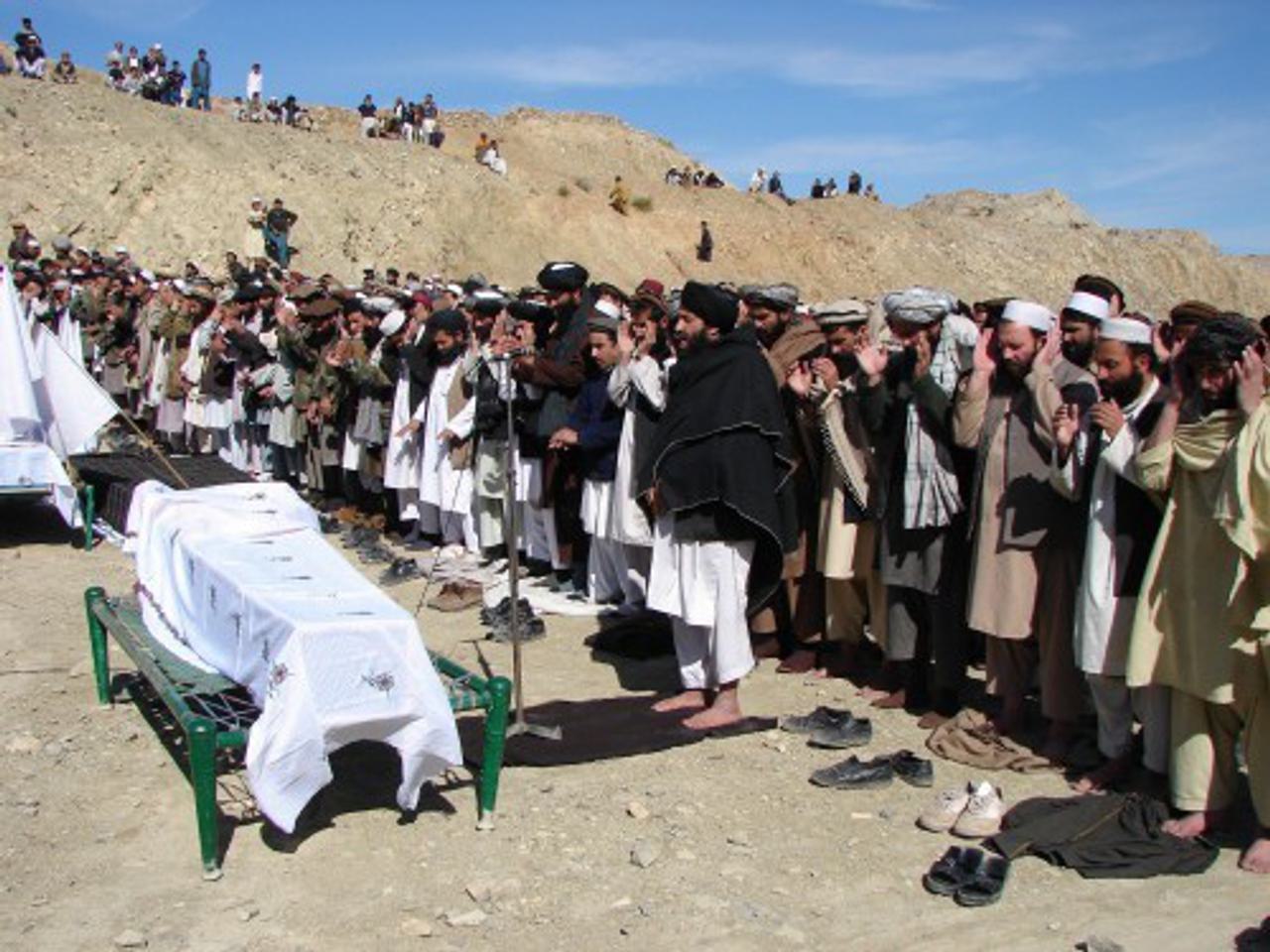
Drone strikes rise to one every four days
Demonstration against CIA drones in Pakistan, April 22 2011. Photo/Pan-African Newswire.
Nek Mohammad is often described as the first casualty of the US drone campaign inside Pakistan. The local Taliban leader died, along with four other suspected militants, as he ate dinner in a courtyard one hot summer’s night in June 2004. Missiles from a Predator unmanned drone blasted a deep crater where he sat.
The attack, like many of the early drone strikes, was initially claimed as the work of Pakistan’s military. There was no public acknowledgment of the strike by the US authorities. To this day, officially the US Central Intelligence Agency (CIA) remains silent on who killed Nek Mohammad.
Often missed out of reports is the fact that two children – boys aged 10 and 16 – also died in this first Pakistan drone attack.
Often missed out is the fact that two children of alleged militant Sher Zaman – boys aged 10 and 16 – also died in this first Pakistan drone attack. They represent the first of hundreds of civilian casualties of drones, many of them children.
Get the data: Twenty-five deadly strikes
The steady rise in drone attacks
The CIA’s drones were initially used sparingly by President George W Bush’s administration. That single strike in June 2004 was followed by three more in 2005, and three attacks the following year. Reports suggest the targets were senior Taliban or al Qaeda leaders. Concerns were high about upsetting close ally Pakistan, particularly as civilian deaths continued.
But in mid-2008, spurred on by militant activity against US and NATO forces in Afghanistan, President Bush ordered a sharp escalation in attacks.
Under President Obama, drone strike rates have risen even higher, as once-rare ‘targeted killings’ have become commonplace. The CIA strikes have risen from one a year to an average of one every four days, almost always in the tribal border regions of North and South Waziristan.
Attempts to ensure some level of accountability from the CIA or US government have so far failed. Recent efforts by the American Civil Liberties Union (ACLU) to force disclosure of civilian casualties in Pakistan abruptly stalled when it was informed by the CIA that it ‘can neither confirm nor deny the existence or nonexistence’ of the programme.
Click here for a full explanation of our methods, and the problems of reporting on drone strikes.
Jonathan Manes, legal fellow at the ACLU, said: ‘As it stands, the public debate on drone strikes is severely hobbled by the government’s failure to provide basic information about the number of innocent civilians killed; the legal criteria that it uses in conducting targeted drone killings; and the internal accountability measures that are in place to ensure that strikes – especially those conducted by the CIA – are in compliance with applicable law.’
Public versus private
Although publicly Islamabad denies it has allowed armed US drones on its territory, rumours persist of secret deals between the two nations. US diplomatic cables obtained by WikiLeaks indicate a gulf between the public and private statements of Pakistan’s present leaders.
Yet as official denials in Washington and Islamabad persist, local media reports suggest constant, and at times heavy, civilian casualties. With the drone war intensifying, public anger in Pakistan is on the rise. Political parties are uniting in opposition to the drones, and public demonstrations against the CIA attacks are becoming more commonplace.
Anti-war protesters display an effigy of a drone, March 19 2011. Photo/Getty Images.
While Washington refuses to acknowledge the drone campaign, in anonymous briefings intelligence officials have informed journalists that targeted drone killings are accurate and effective.
A US counter-terrorism official told the Bureau this week that drone strikes are ‘the most precise weapon in the history of warfare’.
Additional reporting David Pegg and Alice Ross.
The Bureau’s major assessment of CIA drone strikes in Pakistan is an ongoing project. If you would like to be kept informed on this issue click here to sign up to our newsletter.





